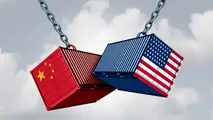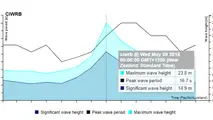The shipping technology making trade finance more transparent
In the twelve months from January to December 2017, over 4,500 vessels in the container, bulker and tanker fleet completed 30,000 visits to OFAC sanctioned terminals (Iran, Cuba, North Korea, Sudan, Syria and the Crimea). Whilst not every vessel visit to a sanctioned port suggests illegal activity, it can be an obvious red flag for the banks and financial institutions required to monitor vessels and their movements, when financing global trade deals.
In the twelve months from January to December 2017, over 4,500 vessels in the container, bulker and tanker fleet completed 30,000 visits to OFAC sanctioned terminals (Iran, Cuba, North Korea, Sudan, Syria and the Crimea). Whilst not every vessel visit to a sanctioned port suggests illegal activity, it can be an obvious red flag for the banks and financial institutions required to monitor vessels and their movements, when financing global trade deals.
So how do we know 4,500 vessels made these trips to sanctioned countries in 2017?
AIS (Automatic Identification System) is a device fitted to vessels which became mandatory in 2002, marking a significant technological advance in the maritime industry. Its original purpose was as an anti-collision tool, giving vessels sufficient detail on a ship’s direction, position and speed, to enhance safety on the ocean. However, this same technology now allows the monitoring of vessel movements in near real-time for other purposes.
In the context of international trade, vessel tracking can be used to identify those seeking to evade sanctions. In fact, several regulatory bodies have documented guidelines specifying that vessel tracking should form part of a bank’s approach to compliance in trade finance, including the Monetary Authority of Singapore (MAS), the United Kingdom Financial Conduct Authority (FCA) and the Hong Kong Association of Banks (HKAB).
For a bank or financial institution providing trade finance, the use of AIS software is increasingly becoming a key component of their compliance arsenal, enabling them to avoid inadvertently breaching sanctions. If, for example, a vessel carrying cargo financed by a bank docks at a terminal in Iran or Syria, the AIS data can flag to the bank that further investigation of the shipment is needed – even before formal port inspections are carried out.
Maritime data vendors are now able to use AIS satellite and shore based transmitters to provide a collated view of all ship movements, often capturing a long history of port visits for vessels of various types; from container ships to inland waterway barges.
Assessing the available technology
Since AIS was launched, a newer technological innovation has become available for vessel tracking in the form of Inmarsat-C. Inmarsat-C is a piece of hardware installed on a vessel, that utilises the next generation of mobile broadband and improves the reliability of ship coverage, even in areas where there is no AIS signal available. However, when it comes to monitoring vessel movements for regulatory purposes, Inmarsat C’s downside is that it is optional, so a vessel looking to evade sanctions would simply not install it.
AIS, on the other hand, is compulsory for vessels and is therefore a better way of monitoring them for compliance purposes. But AIS also has its drawbacks; it can be switched off, resulting in vessels ‘going dark’, which prevents them from being tracked. AIS can also be ‘spoofed’ via a legitimate process when a vessel changes its flag. By changing a flag, the ship’s Maritime Mobile Service Identity (MMSI) number will change and in some circumstances, the MMSI number can be redistributed. A redistributed number can mean that a vessel appears to be in two different locations at the same time.
It is important to note that vessels ‘going dark’ or changing their flag can be legitimate, as AIS can lose signal due to adverse weather conditions, for example. So while these are undoubtedly limitations of the technology, they are not necessarily indicators of any wrongdoing.
Despite its limitations, what AIS provides for financial institutions is a quick and efficient way to understand if there are any visible red flags that they should prioritise for investigation, in order to understand the full picture of the risks associated with a trade.
Optimising AIS for compliance
Making the most of AIS for regulatory compliance purposes requires supplementing the content with data from other sources – such as the information collected by port authorities and government bodies when vessels pass through their jurisdiction. This additional data not only helps to verify the information provided by AIS, but can also help to identify the vessels ‘going dark’ by switching their AIS signal off. The combination of these different streams of data, collated together, can be a powerful indicator of possible illicit activity and a prompt to further investigate any suspicious behaviour.
Since regulatory bodies, like the UK FCA, HKAB and MAS, have advised compliance units to monitor and track vessels to ensure sanctions compliance, banks and financial institutions need to be aware of the limitations of the available technology. They should also be aware of the differences between the various AIS data vendors on the market today, as not all of them offer the same service.
AIS alone is not enough to provide a guarantee that vessel journeys have been fully monitored; for banks conducting trade compliance, AIS must be combined with additional data, such as port authority information, as well as deep understanding of the sanctions landscape, to be effective.
Source: hellenicshippingnews



